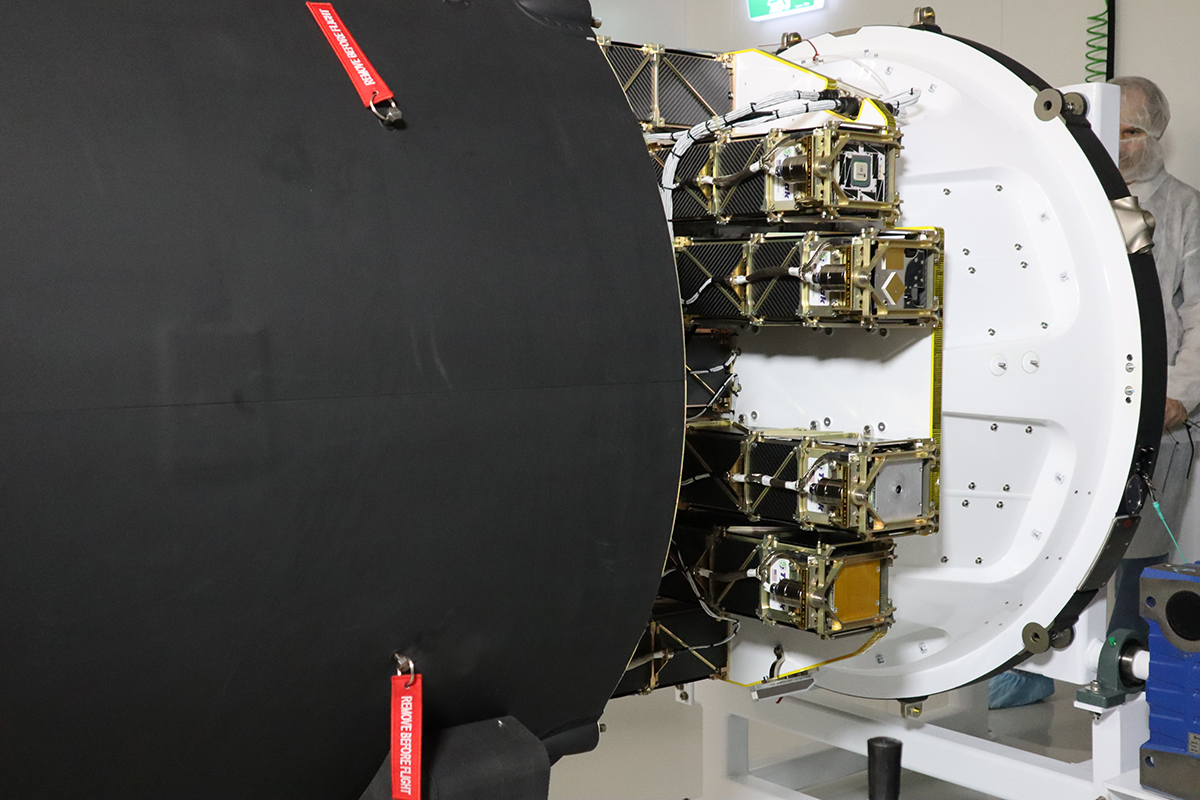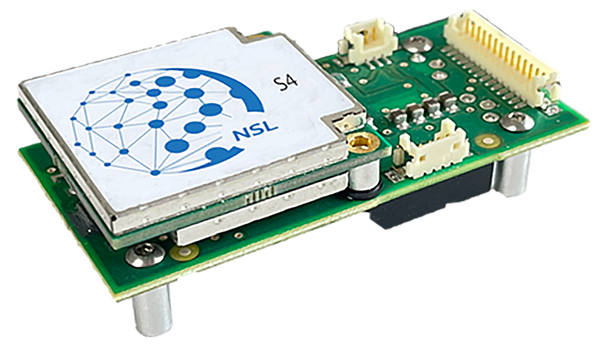
Keeping the Connection
Subheadline
NASA-proven radio enables satellite-to-satellite communication
With about 5,800 satellites orbiting Earth, more data streams than ever are trying to connect with a limited number of ground stations. As more spacecraft join them in orbit – and more of these are small satellites that can’t carry powerful, complex transponders – a growing trend is for smaller satellites to set up a data relay, sending those signals to constellations of big communications satellites that transmit them to any location on Earth in a matter of seconds, all day every day.
One device enabling this satellite-to-satellite communication, the EyeStar radio developed by NearSpace Launch Inc., used NASA’s CubeSat Launch Initiative (CSLI) to prove a small instrument could deliver big results. The idea of little satellites piggybacking on existing communications constellations to increase the frequency of data transmissions was novel in 2014, when the EyeStar radio was developed, according to Matt Voss, COO of the Upland, Indiana-based company.
“The standard data transmission is about once every eight hours as the satellite passes over a ground station,” he said. But that can be less frequent if the signal can’t make it through Earth’s atmosphere in time or the designated ground station isn’t available.
The company has flown over 800 systems and subsystems in low-Earth orbit. Some serve as the primary communication link, while others provide supplemental information like satellite health data or low-resolution images.
EyeStar devices relay signals via more than 66 satellites in the Iridium constellation. These orbit well above most low-Earth orbit satellites, so an EyeStar radio points up instead of down. Even if its satellite tumbles out of control, the EyeStar data can still connect with the constellation.
“Usually you need a very stable satellite to connect to a ground station. But even if the satellite becomes unstable, we can connect and identify whatever the problem is, so the spacecraft operator can fix it,” said Voss. That connection can prevent a total loss.
Voss’ father Hank, cofounder and now chief scientist at NearSpace, led a team that developed the first EyeStar radio at Taylor University and incorporated it into a CubeSat selected by CSLI. The initiative provides flight opportunities for U.S. CubeSat developers, nonprofits, and universities as secondary payloads on commercial or government launches. Norman Phelps, CSLI mission manager at NASA’s Kennedy Space Center in Florida, said the initiative selects technologies “based on their scientific, educational, and technology benefits.”
The transition to a successful commercial offering included an educational program sponsored by the state of Virginia. A group of 90 satellites carried projects for students, researchers, and others into low-Earth orbit. Voss said several major companies also participated, including General Atomics, Nanoracks, NovaWurks, Nano-Satellite Systems, and others.
Now the company is adding new products such as the EyeStar Black Box. Described as a “barnacle” that attaches to a satellite, the device has its own power source and a GPS antenna and can incorporate sensors to capture things like temperature and particle detection.
The NearSpace technology has been so successful the company now provides radios for other organizations participating in CSLI.
“Because we build systems for a lot of customers using NASA launches or partnering with NASA, we continue to learn from the agency,” said Voss.

The EyeStar radio sends data from a small CubeSat to a larger communications satellite constellation in orbit overhead, eliminating the need for the bulkier communications hardware capable of transmitting data through Earth’s atmosphere. Credit: NearSpace Inc.
The NearSpace Black Box is a self-powered EyeStar radio with GPS technology that can attach to the side of a CubeSat to facilitate satellite-to-satellite communications. Called a “barnacle,” the device comes in different sizes to accommodate customer needs. Credit: NearSpace Inc.

This picture of the Educational Launch of Nanosatellites 19 mission shows multiple CubeSats encapsulated inside a rocket payload fairing. A flight like this one proved the capability of the NearSpace Launch EyeStar radio before the company made it commercially available. Credit: NASA













